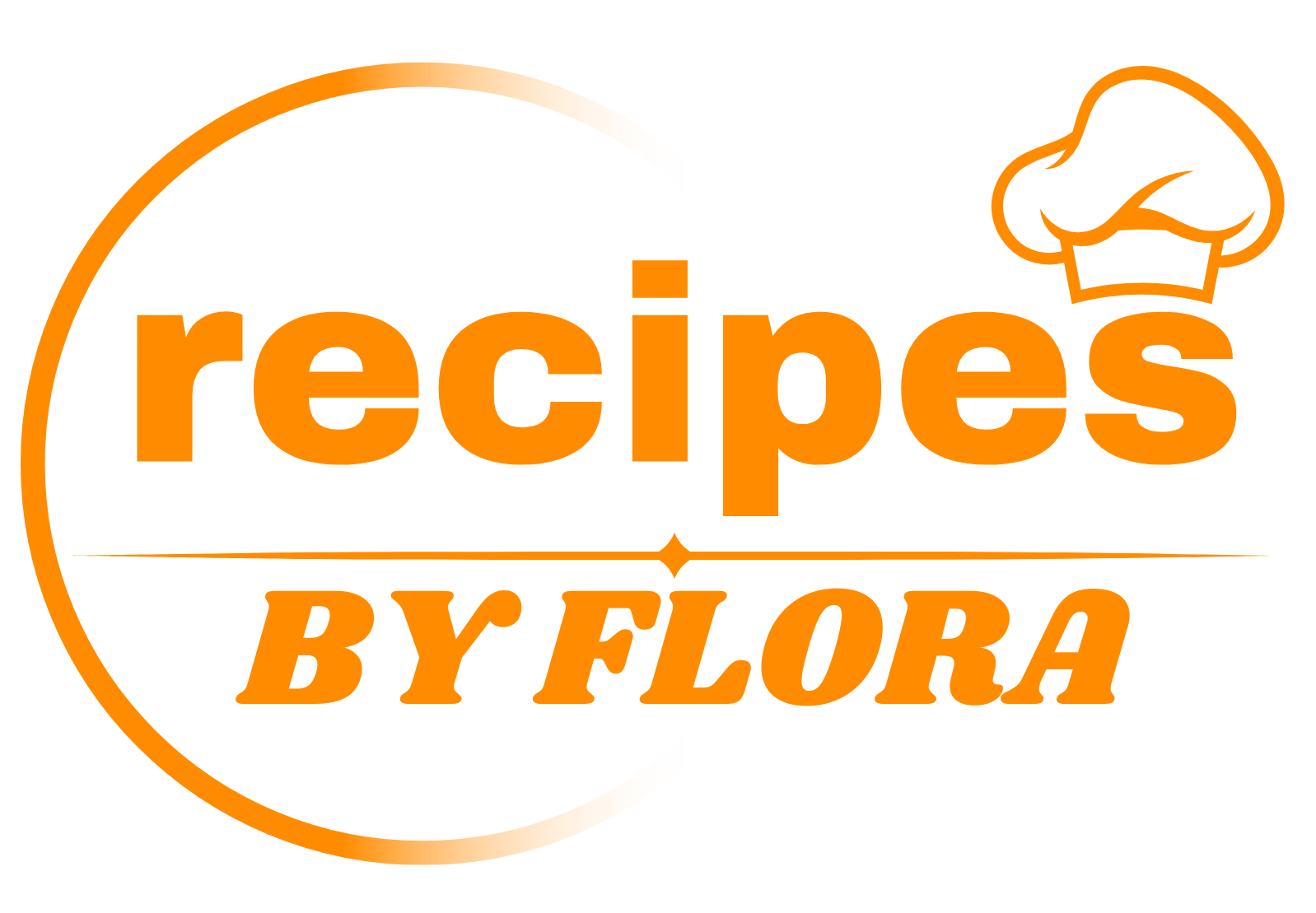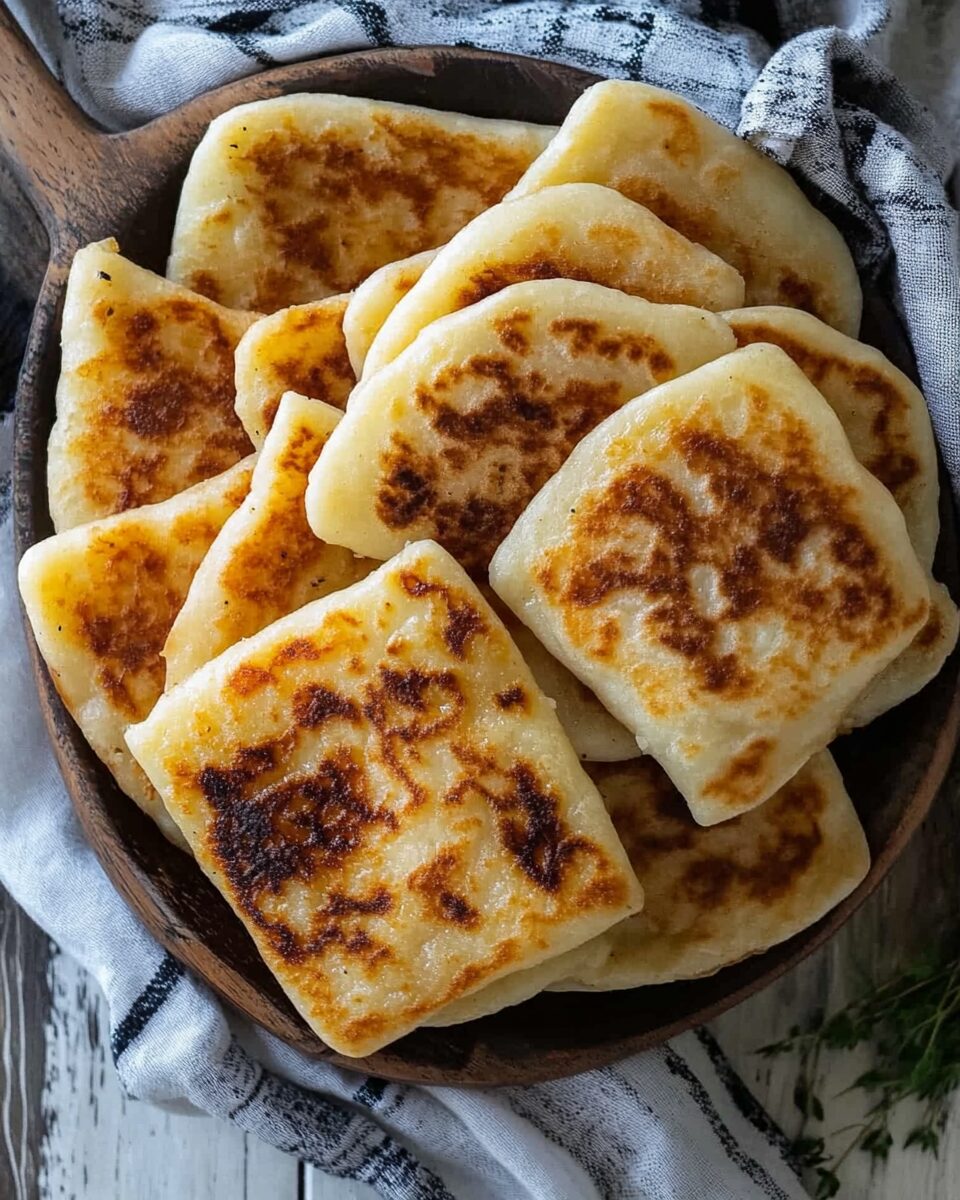Potato Farls are a classic Irish dish made from simple ingredients like potatoes, flour, butter, and salt. These soft, pan-fried potato breads are traditionally served at breakfast but can also be enjoyed as a snack or side dish. They are quick to prepare and a great way to use leftover mashed potatoes.
Full Recipe:
Ingredients
- 2 cups (about 500g) mashed potatoes (cooled)
- 1 cup (125g) all-purpose flour
- 2 tablespoons butter (melted)
- ½ teaspoon salt
- A little extra flour for dusting
Directions
- In a large bowl, combine the mashed potatoes, flour, melted butter, and salt. Mix until a dough forms.
- Lightly flour a clean surface and turn out the dough. Gently knead until smooth.
- Roll the dough into a circle about ¼ inch thick.
- Cut the circle into quarters (farls).
- Heat a non-stick pan or griddle over medium heat.
- Cook the farls for about 3-4 minutes on each side, until golden brown.
- Serve warm with butter or your favorite toppings.
Nutrients
- Calories: Approximately 150 per farl
- Carbohydrates: 27g
- Protein: 3g
- Fat: 3g
- Fiber: 2g
- Sugar: 1g
The History and Cultural Significance of Potato Farls
Potato farls have deep roots in Irish culinary history. They are closely associated with the famous Ulster Fry, a traditional breakfast that includes bacon, sausage, eggs, and other fried items alongside potato farls. This dish reflects Ireland’s rich agricultural history, where potatoes have been a staple crop for centuries. Potato farls emerged as a practical and delicious way to use up leftover mashed potatoes. In rural Irish households, waste was not an option, and turning extra potatoes into a hearty, filling bread was both economical and comforting.
Simple Ingredients with Big Flavor
One of the most charming aspects of potato farls is their simplicity. They are made with just four basic ingredients: mashed potatoes, flour, butter, and salt. Despite this humble ingredient list, they deliver an exceptional texture and taste. The outside becomes slightly crisp from frying, while the inside remains soft and fluffy. This combination of textures, along with the warm, buttery flavor of the potatoes, makes them irresistibly delicious.
A Brilliant Use for Leftover Potatoes
Potato farls are particularly popular after holidays like Christmas, Thanksgiving, or St. Patrick’s Day, when there’s often an abundance of leftover mashed potatoes. Rather than letting those leftovers go to waste, they can be transformed into something new and exciting. This makes potato farls an excellent example of creative cooking that minimizes food waste. Because the recipe works best with cooled, leftover mashed potatoes, it’s the perfect solution for day-after meals.
Versatile Serving Options
While potato farls are often served at breakfast alongside eggs and bacon, their potential doesn’t end there. These soft potato breads can also be enjoyed at lunch or dinner as a side dish. They pair wonderfully with soups and stews, acting as a comforting, starchy companion to hearty meals. They can also be served with smoked salmon and cream cheese for a more elegant touch. Potato farls also work beautifully as a base for open-faced sandwiches, topped with anything from cheese and tomatoes to sautéed mushrooms or even leftover roast beef.
Quick and Easy Preparation
Another reason for the enduring popularity of potato farls is how quick and easy they are to make. From mixing the dough to frying them in a pan, the process takes less than 30 minutes. There’s no need for any complicated techniques, rising time, or special equipment. This makes them a great option for beginner cooks or anyone looking for a fuss-free homemade bread. Their simplicity also means that kids can easily help with the process, turning the preparation of potato farls into a fun family activity.
Texture and Taste Perfection
The texture of a perfectly cooked potato farl is one of its standout features. When cooked on a hot pan, the exterior becomes golden and slightly crisp, while the inside stays tender and soft. This contrast makes each bite incredibly satisfying. The flavor is subtle but comforting, with the creamy taste of potatoes complemented by a hint of buttery richness. If desired, the basic dough can be enhanced with additional flavors like grated cheese, chopped herbs, or even garlic powder, allowing for endless variations while keeping the core texture intact.
Traditional and Modern Twists
While the classic potato farl recipe is timeless, modern cooks have found ways to put their own spins on this traditional dish. Some add grated cheese to the dough for extra indulgence, while others mix in scallions or chives for a hint of freshness. In some regions, potato farls are served with a drizzle of honey or a sprinkle of sugar for a sweet-salty contrast. More adventurous cooks have even used potato farls as the base for mini pizzas, topping them with tomato sauce, mozzarella, and their favorite toppings before baking them briefly to melt the cheese.
A Gluten-Free Adaptation
For those who follow a gluten-free diet, potato farls can easily be adapted by substituting the all-purpose flour with a gluten-free blend. Since the recipe relies heavily on the binding power of mashed potatoes, the amount of flour needed is minimal, making gluten-free substitutions particularly effective. This means that potato farls can be enjoyed by those with celiac disease or gluten intolerance without sacrificing taste or texture.
Perfect for Special Occasions or Everyday Meals
Potato farls are equally suited to festive holiday breakfasts and casual weekday dinners. On special occasions like St. Patrick’s Day, they bring authentic Irish flavor to the table, especially when served alongside other traditional favorites. Yet, because they are so easy to make, they can just as easily become a go-to recipe for any day of the week. Whether served with a hearty beef stew on a cold winter night or enjoyed with scrambled eggs and bacon on a relaxed Sunday morning, potato farls fit seamlessly into a variety of meals.
Affordable and Accessible Ingredients
Part of the enduring appeal of potato farls is their affordability. Potatoes, flour, butter, and salt are all inexpensive, basic pantry staples. This makes potato farls an excellent budget-friendly recipe that delivers satisfying comfort food without requiring expensive ingredients. For families looking to stretch their grocery budget or college students cooking on a tight budget, potato farls offer a delicious way to make the most of simple, affordable ingredients.
Potato Farls in Irish Culture
Beyond their role as a beloved dish, potato farls also hold cultural significance in Ireland. They evoke memories of home-cooked meals, family gatherings, and the resilience of Irish cooking traditions that have been passed down through generations. Potato farls are a culinary link to the past, representing both the simplicity and ingenuity of Irish cuisine. For Irish people living abroad, making potato farls can be a comforting way to connect with their heritage and bring a taste of home to their kitchens, no matter where they are in the world.
Tips for the Best Potato Farls
To achieve the perfect potato farls, a few simple tips can make a big difference. First, use potatoes that are well-mashed and free of lumps to ensure the dough comes together smoothly. Second, avoid over-kneading the dough, as this can lead to a tougher texture. Light handling will keep the farls soft and tender. Finally, cooking them on a moderate heat is key — too hot, and the outside will burn before the inside cooks through; too low, and they won’t develop that signature golden crust.
Conclusion
Potato Farls are a testament to the beauty of simple, traditional cooking. With just a few basic ingredients and minimal effort, you can create a dish that is comforting, versatile, and deeply rooted in Irish heritage. Whether served as part of a hearty breakfast, alongside a bowl of soup, or as a base for creative toppings, potato farls are a delicious way to celebrate the humble potato. Their ease of preparation, adaptability, and rich cultural history make them a wonderful addition to any recipe collection. From family kitchens in Ireland to tables around the world, potato farls continue to bring warmth, comfort, and a taste of tradition to every bite.






